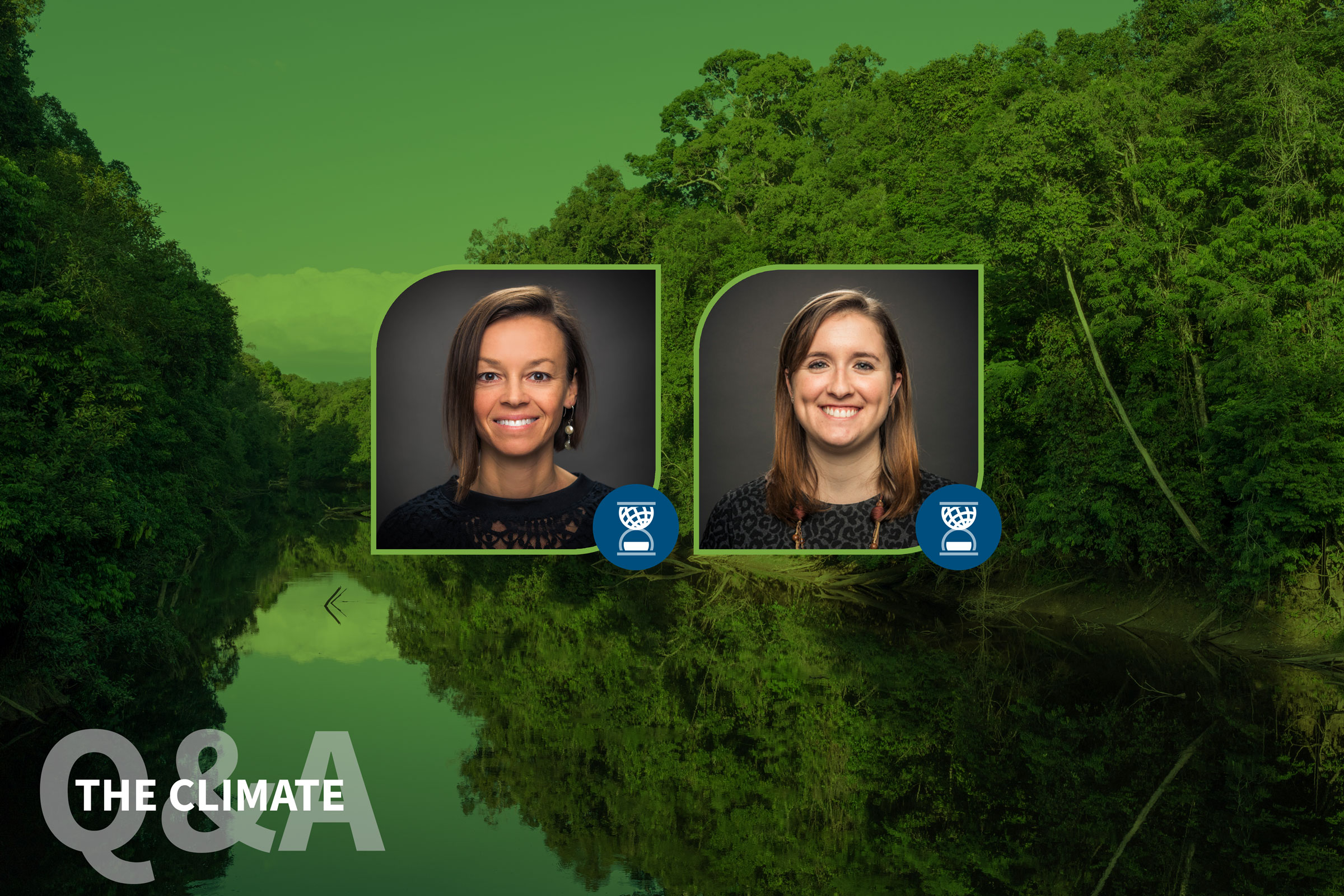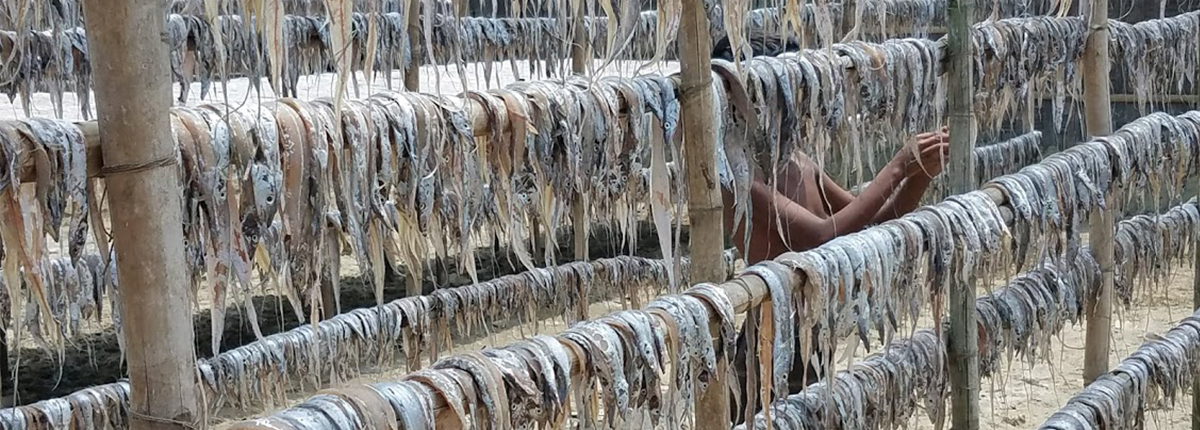
The Climate Q&A…
with Julie Barton, Associate Director of Child Labor and Education, and Alyssa Cochran, Program Officer in Winrock’s Human Rights, Education and Empowerment group
Julie Barton has more than 15 years of experience leading child labor programs and addressing related educational access and livelihoods for vulnerable populations, and spent part of her career working on these and other critical issues in West and Southern Africa. Alyssa Cochran has more than 10 years of experience working on child labor, education and health programs for youth and vulnerable populations in Africa and Southeast Asia, and has managed the U.S. Department of Labor (USDOL) Child Labor Improvements Project in Bangladesh (CLIMB), implemented by Winrock for the past 3.5 years.
Can you each tell us a little about yourselves and how you became interested in child labor issues?
Julie: Growing up, I always had an interest in places, cultures, languages, and people beyond the confines of my neighborhood, school, and community. I sought out opportunities to understand others’ life circumstances, which helped broaden my perspective. During college I had the opportunity to live with a host family and do anthropological field research in the Caribbean for a semester, and to study abroad at the University of Zimbabwe. That was 25 years ago now, but those experiences helped shape my understanding of the challenges families and communities face. After college I spent nearly six years living and working in Latin America and Africa, specifically, Ecuador and Venezuela, and then Guinea and South Africa, on education and livelihoods projects. When I joined Winrock in 2010 as a Program Officer, I was formally introduced to our technical approaches to addressing child labor, and had the privilege of learning from our field teams in Ghana and Côte d’Ivoire who had been working on the issue of child labor at the community level. Understanding the context is so important to finding the right solutions to problems, and that is so true for child labor.
Alyssa: I attended the American University School of International Studies in Washington, D.C., because I was interested in learning about different cultures and how I could make a difference. In my first year there, I began learning about the field of international development, and decided to take advantage of a school program called an “Alternative Break” to travel to Guatemala, where I learned about fair trade in the coffee sector. That was the first opportunity I had to really see and learn about the impacts of child labor in agriculture-based communities. I was fortunate to have the opportunity to join Winrock in 2015 and since then have been working on child labor prevention programs in Zambia and Bangladesh.

What are some of the factors and community vulnerabilities that contribute to child labor in the world ── and what’s the current scope of the problem?
Currently, more than 152 million children are in child labor globally, with nearly half of them in Africa. Although we have seen a significant decrease in the percentage of children in child labor over the past decade, the problem persists, particularly in the agricultural sector, which represents about 70 percent of those in child labor. Most child labor happens on smallholder farms and in or around small mines located in hard-to-reach places, which makes identifying child labor challenging. Additionally, social norms around children’s roles in the household, as well as gender norms factor into family decisions about who should work on the farm and who goes to school. Often, even children who are enrolled in school are forced to work long hours after the school day, or can be withdrawn from school during peak agricultural periods (sowing or harvesting) to help on the farm, or required to work after school hours in the local mines. Poverty is a major factor contributing to child labor, with the hidden costs of education, opportunity costs of sending children to school, and the inability to hire day laborers or to meet agriculture or manufacturing quotas driving decisions on how children spend their childhood.

A range of Winrock projects in Africa, Asia and Latin America aim to prevent and ultimately, eliminate child labor. How has the COVID pandemic impacted those efforts?
The pandemic threatens the progress made over the last decade in reducing child labor. It is particularly acute for vulnerable families in marginalized communities who lack the social and economic protections afforded to other individuals and families. The pandemic has further highlighted gaps in access to education, health, markets and social protection services, and increases the pressure on families due to loss of livelihoods; school closures are also pushing children into labor and into increasingly unsafe working conditions. Border closures and disruption of supply chains have had a negative impact on local economies, and reduced employment in both the informal and formal economic sectors is increasing the risk of child labor and forced labor. Our child labor projects in Africa and Asia have had to adapt in a variety of ways to support the vulnerable families and communities we serve. We’ve also increased support to governments to address the problem, including working on strategies to strengthen, improve and more effectively enforce child labor laws in the face of increased demands on limited resources.
What adaptations have Winrock’s child labor prevention projects, such as CLIMB, developed in response to the pandemic ── and are they helping? Are CLIMB’s gains at risk, considering the added economic, social and health stressors posed by the pandemic?
In the U.S. Department of Labor (USDOL) CLIMB project, Bangladeshi families in the dried fish sector in Cox’s Bazar District, on the southeast coast, have struggled to feed their families due to decreased economic activity and reductions in income during the pandemic. We conducted a survey of 745 households in Cox’s Bazar in January 2020 to see how they were impacted. That study revealed that families are increasingly relying on credit to survive, and that many families now have no other choice but to take on debt to feed their families, which significantly increases the risks of children being pushed into forced labor situations. The survey helped the project to understand the particular needs of the families in the dried fish sector and design a response. CLIMB applied for and was awarded additional funds from USDOL to respond to the COVID crisis, enabling the project to distribute emergency livelihoods packages including basic necessities such as hygiene materials directly to 500 vulnerable families, along with direct, alternative livelihood training to 240 families. In addition, during the pandemic the project utilized a local public services directory developed as part of CLIMB activities by a local community partner, to provide referrals for 954 families to receive additional livelihood services from the Government of Bangladesh’s “Social Safety Net” programs and other providers.

The CLIMB project is just wrapping up – what are some of the biggest impacts of their work?
Under CLIMB, Winrock provided capacity building and more than $500,000 in grants to a carefully selected group of five civil society organizations (CSOs) and local partners to gather and share child labor evidence, which helped inform our advocacy and engagement efforts and begin addressing child labor in the dried fish sector in Cox’s Bazar. CLIMB’s implementing partner on the research side, SUIT, published a first-of-its-kind report, Comprehensive Mixed-Method Research on Child Labor in the Dried Fish Sector in Cox’s Bazar. This kind of data had never been collected or shared, previously, and it showed the scope of the child labor problem in the fish sector. Specifically, it enabled CLIMB and our partners to use the research to coordinate and dramatically raise awareness about child labor both nationally and specifically in the dried fish sector within Cox’s Bazar. CLIMB used the findings to hold 28 community awareness-raising events that reached 5,129 people with awareness-raising messages. We also published 65 stories about child labor in the DFS through increased engagement of journalists in the project; and through the national advocacy group, presented the research to national-level advocacy organizations and the government. The findings were so important that Bangladesh’s government used them to justify including the DFS, for the first time, in the list of hazardous child labor in the revised National Plan of Action to Eliminate Child Labor. CLIMB’s Information Service Center (ISC) enabled CSOs to coordinate with service providers to support families in the DFS. A total of 1,190 individuals were reached by community-awareness campaigns to access services, 954 individuals were referred to and provided services by other programs, and 31 grievance cases were resolved by the grievance coordination committee based at the ISC. CLIMB’s external final evaluation found that by providing high quality technical assistance, capacity building, awareness raising, advocacy, and support to families and children, the project has established a basis for sustainability. We hope that the increased knowledge and coordination of services for families in the DFS will lead to continued efforts by the government and civil society to address child labor in the sector, as well as in the region and nationally.
How do you think increased climate-related migration and internal displacement might affect the child labor issue in the future?
Climate is an increasingly common driver of migration, both internally within countries and globally across borders. Depending on whether climate change is a rapid or slow onset, it interacts intimately with other vulnerabilities and can be a driver of child labor. Children in families forced out of communities impacted by extreme weather, droughts or floods may end up migrating abruptly and without proper documents and potentially being separated from their families, which increases their vulnerability to child labor. Without robust, safe migration policies and pathways in place, and in the absence of legal and accessible work opportunities for adults, children are at increased risk for child labor. Climate change also disproportionately affects those who make their living from the land, and environmental degradation can push parents to send their children out for work when their own work has been impacted. When the need for income is extreme, children are also pushed deeper into jobs with higher risk exposure to danger and exploitation. And, rapid migration for any reason, including climate change, makes it more difficult for children to get back into school, which is another vulnerability. In taking care of both people and our planet, we need to consider the unique needs of children, particularly those in crisis and conflict settings, in order to protect them.

What are some of the most important things we can do to eliminate child labor?
Eliminating child labor requires us to address the complex socio-cultural and economic barriers that underlie the problem. It requires a collective understanding that child labor is not only a human rights issue, but also a social, development, and economic issue. Economic strengthening interventions focused on increasing income at the household level can help to address the economic drivers of child labor. The importance of strengthening communities’ capacity for sustained response and engagement of government on child labor cannot be understated. Identifying influencers and champions for change within communities and within government is critical to eliminating child labor. Within the business community there is now increased understanding that reducing child labor has tangible, positive outcomes. Winrock works to unify the efforts of industry and other stakeholders to address child labor holistically at multiple levels: household, community, local and national government. Through our work we strive to build a stronger evidence base for effective approaches to address child labor ──specifically, approaches that are effective at national, district and community levels in different country contexts. Without a solid evidence base for what works, where and why, we, as a global community, will continue to struggle to eliminate child labor.
Related Projects

